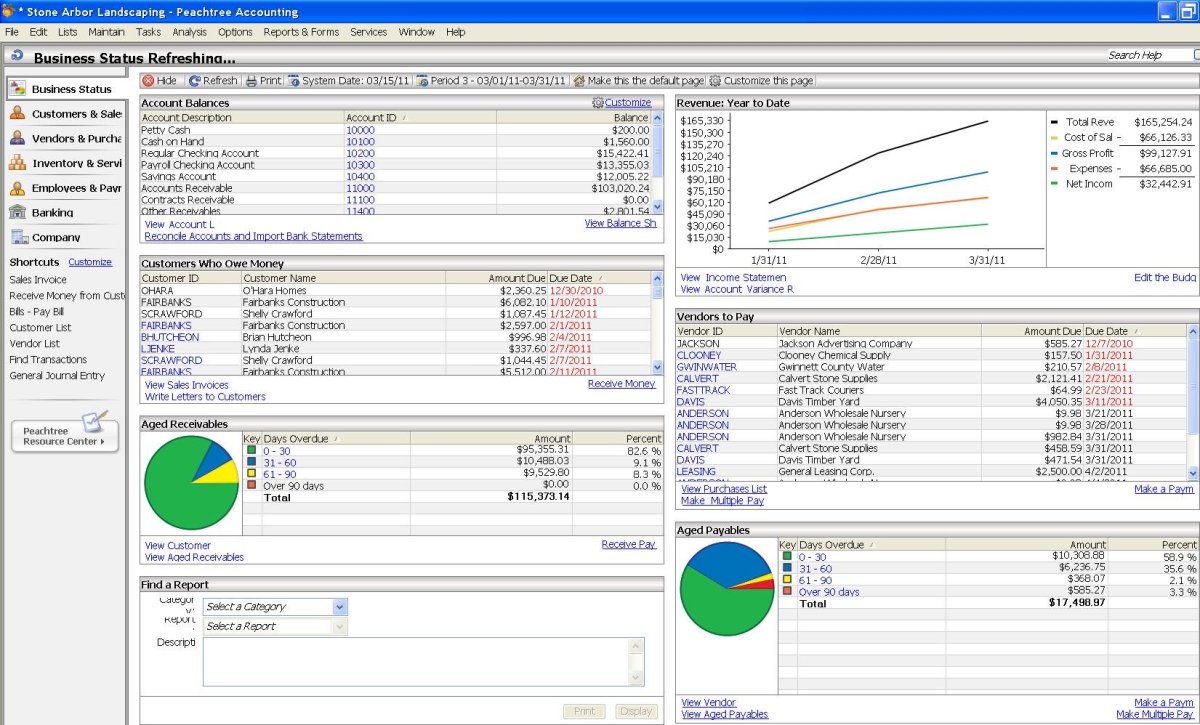Basic Terms used in Accounting
Financial Statements
There are two basic financial statements which are prepared by an enterprise:
- Profit & Loss Statement, and
- Balance Sheet.

Accounting Equation
The three components of a balance sheet can be stated in the form of following basic accounting equation
Assets = Liabilities + Capital (owners equity)
eg: Rs.50,000=Rs. 10,000+Rs.40,000
This equation tells at a glance that the resources of this enterprise total Rs. 50,000 and these assets are financed by two sources — Rs. 10,000 by the creditors(liabilities), also known as outsiders claims, and Rs.40,000 by the owner (capital), also known as owner equity.
Business Transactions
It is an economic event that relates to a business entity. It can be a purchase of goods, collection of money, payment to creditors for goods and expenses. An event to be a transaction must possess the quality of economic substance, relate to business and affect the economic results. In other words, an event must be capable of being measured in monetary terms and related to business enterprise in terms of economic consequence.
Assets
These are economic resources of an enterprise that can be usefully expressed in monetary terms. Assets are things of value used by the business in its operations.
For example, Departmental Store owns a fleet of trucks, which is used by it for delivering food stuff; the trucks, thus, provides economic benefits to the enterprise. This item will be shown of the asset side of the balance sheet of Departmental Store. Assets can be broadly classified into two types: Fixed Assets and Current Assets.
- Fixed Assets are assets held on a long term basis, such as land, buildings, machinery, plant, furniture and fixtures. These assets are used for doing business and not for re-sale in normal course of operation.
- Current Assets are assets held on a short term basis such as debtors (account receivable), bills receivable (notes receivable), stock (inventory), temporary investment in securities, cash and bank balances. Normally the short term refers to an accounting year.
Liabilities
These are the obligations or debts that the enterprise must pay in money or services at sometime in the future.
Therefore, represent creditors, claims against assets of the firms. Both small and big businesses find it necessary to borrow money at some time or the other, and to purchase goods on credit.
For example, super bazaar, purchases goods for Rs. 10,000 on credit for a month from Fast Foods Products Company on 25 December 2001. If the balance sheet of Departmental stores is prepared as at 31 December 2001, Fast Food Products Company will be shown as creditors (accounts payable) on the liabilities side of the balance sheet. If the departmental store also takes a loan for a period of three years from ABC Bank Ltd., this will be shown as a liability in the balance sheet of the Departmental Stores.
- Long term liabilities are those that are usually payable after a period of one year, for example, a term loan from financial institution or debentures (bonds) issued by the company.
- Short term liabilities are obligations that are payable within a period of one year, for example, creditors (accounts payable), bills payable (notes payable), cash credit overdraft from a bank for a short period.
Capital
Investment by the owners for the use in the firm is known as capital. From the accounting equation given earlier, it can easily be found that the capital is Rs.40,000. Owner’s equity is the ownership claim on total assets. It is equal to total assets minus total external liabilities: E=A-L this is also called residual interest. Owner's equity is equal to capital.
Sales
Sales are total revenues from goods sold and/or services sold or provided to customers. Sales may be cash sales or credit sales.
Revenues
These are the amounts the business earns by selling it products or providing services to customers. These are called 'sales revenues'. Other items and sources of revenues common to many businesses are: sales, fees, commission, interest, dividends, royalties, rent received, etc.
Expenses
These are costs incurred by a business in the process of earning revenues. Generally, expenses are measured by the cost of assets consumed or services used during an accounting period.
The usual items of expenses are: depreciation, rent, wages, salary, interest, costs of heat, light and water, telephone, etc.
Expenditure
Expenditure is the amount of resources consumed. Usually, it is of long term in nature. Therefore, its benefit is to be derived in future. For example: capital expenditure.
Loss
Loss is the gross decreases in the assets or gross increases in the liabilities. It is the excess of expenses over revenues. It represents reduction in owners' equity due to inability of the firm to recover the assets used in the business.
For example, a firm spends Rs. 70,000 and generates revenue of Rs. 60,000, there is a loss of Rs. 10,000 which represents non-recovery of assets consumed in doing business.
Income
Income is the increase in the net worth of the organization either from business activity or other activities. Income is a comprehensive term, which includes profit also. In accounting income is the positive change in the wealth of the firm over a period of time.
Profit
Profit is the excess of revenues over expenses during an accounting year. It increases the owner’s equity.
Gains
Gain is the change in the equity (net worth) arising from change in the form and place of goods and holding of assets over a period of time whether realized or unrealized. It may either be of capital nature or revenue nature or both.
Drawings
It is the amount of cash or other assets withdrawn by the owner for his personal use.
Purchases
Purchases are total amounts of goods procured by a business on credit and for cash, for use or sale. In a trading concern, purchases are made of merchandise for resale with or without processing. In a manufacturing concern, raw materials are purchased, processed further into finished goods and then sold. Purchases may be cash purchases or credit purchases.
Also See: Stock Exchange Terminologies
- Stock Market Terms
The place where company stock and derivatives are traded at an agreed price is called a stock market or equity market. Some of the basic and important terms used in stock markets.
Stock
Stock (inventory) is a measure of something on hand-goods, spares and other items-in a business. It is called stock on hand.
In a trading concern, the stock on hand is the amount of goods which have not been sold on the date on which the balance sheet is prepared. This is also called closing stock (ending inventory). In a manufacturing company, closing stock comprises raw materials, semi-finished goods and finished goods on hand on the closing date.
Similarly, opening stock (beginning inventory) is the amount of stock at the beginning of the accounting year.
Debtors/Accounts Receivable
Debtors (accounts receivable) are persons and/or other entities who owe to an enterprise an amount for receiving goods and services on the credit. The total amount due from such persons and/or entities on the closing date is shown in the balance sheet as the sundry debtors (account receivables) on the asset side.
Creditors/Accounts Payable
Creditors (accounts payable) are persons and/or other entities who have to be paid by an enterprise an amount for providing the enterprise goods and/ or services on credit. The total amount standing due to such persons and/or entities on the closing date is shown on the balance sheet as sundry creditors (accounts payable) on the liability side.
See also:
- Financial Accounting | Role of Accounting | Objectives of Accounting | Limitations of Accounting
What is Financial Accounting, Objectives of Accounting, Limitations of Accounting, Role of Accounting. Differences between Accounting and Book-Keeping, Objectives of Accounting. - What is the use of Accounting
Accounting is the art of recording, classifying, and summarizing in a significant manner and in terms of money, transactions and events which are, in part, at least, of a financial character, and interpreting the results thereof.








